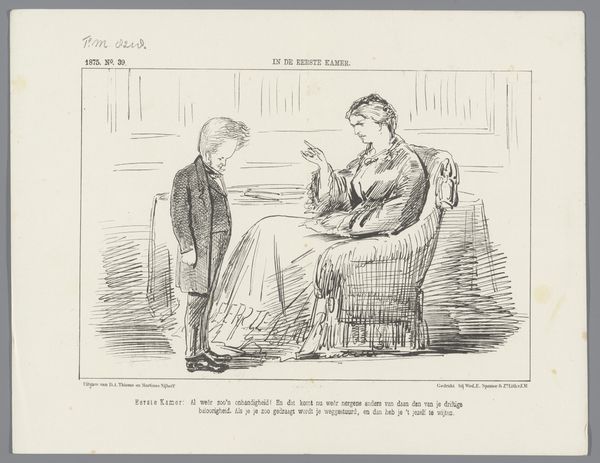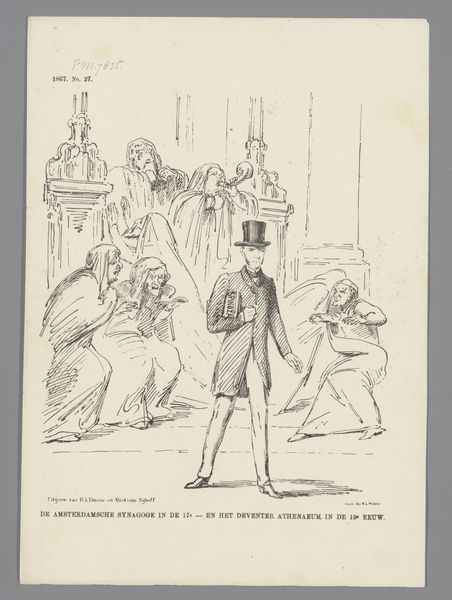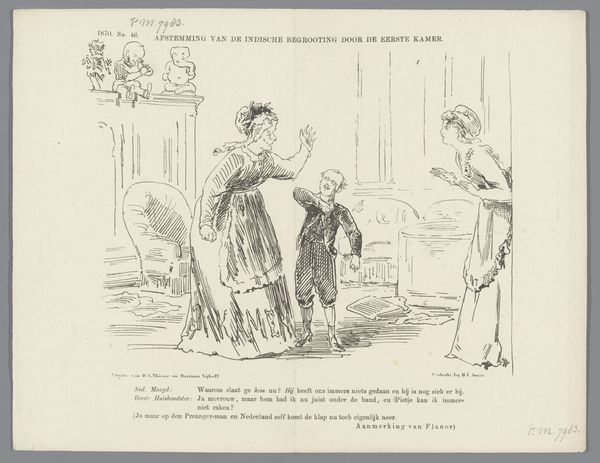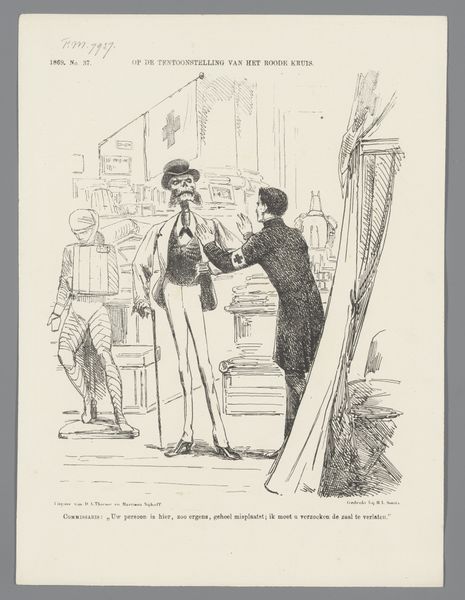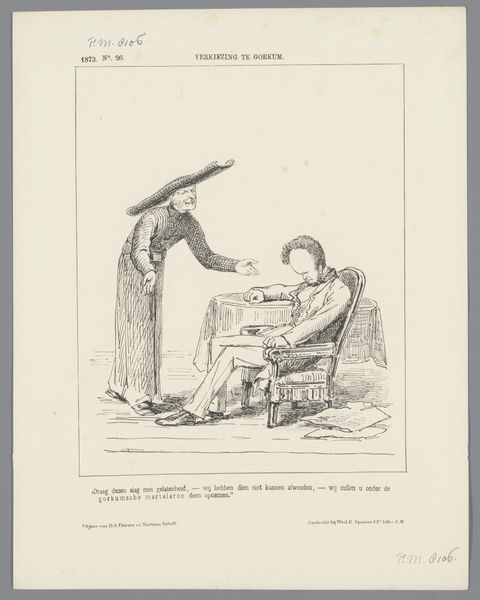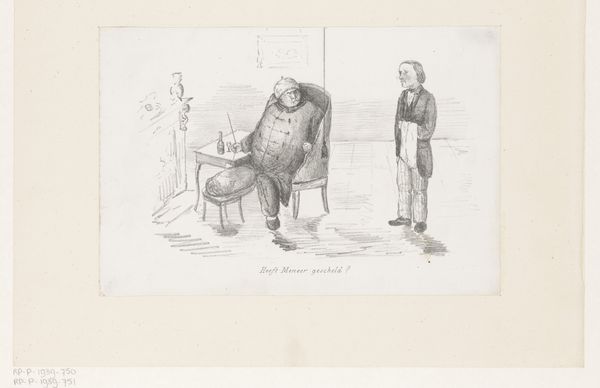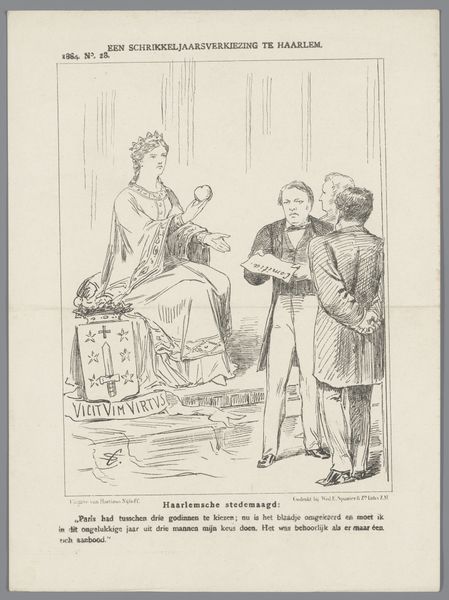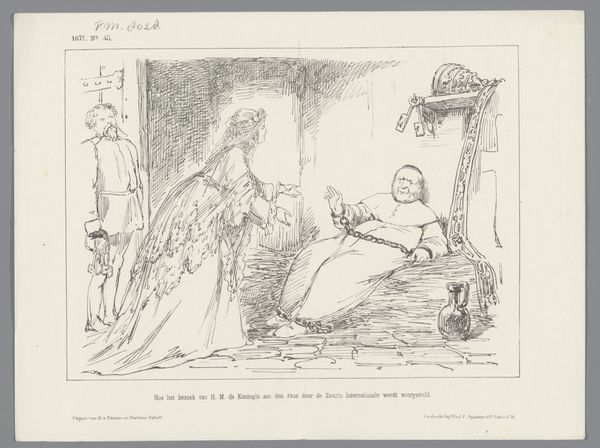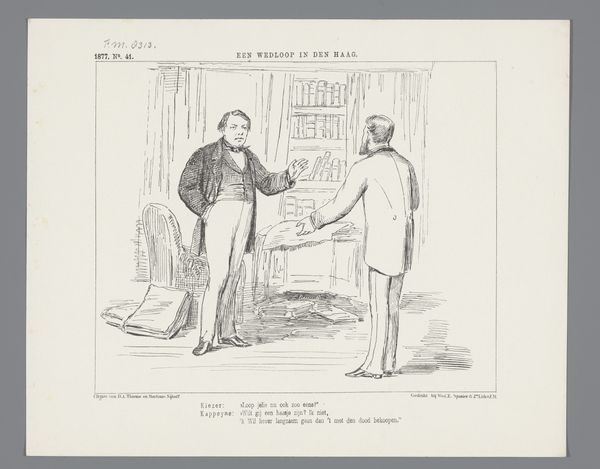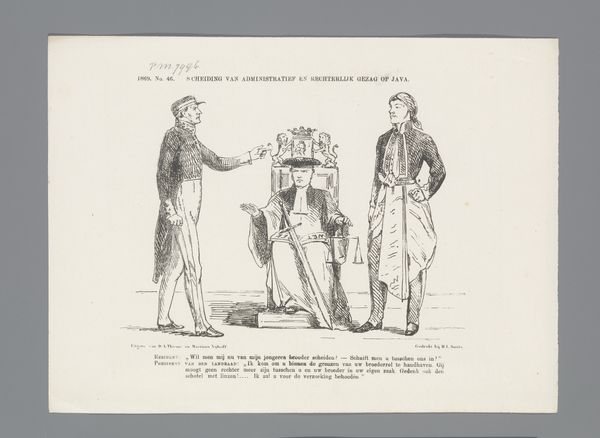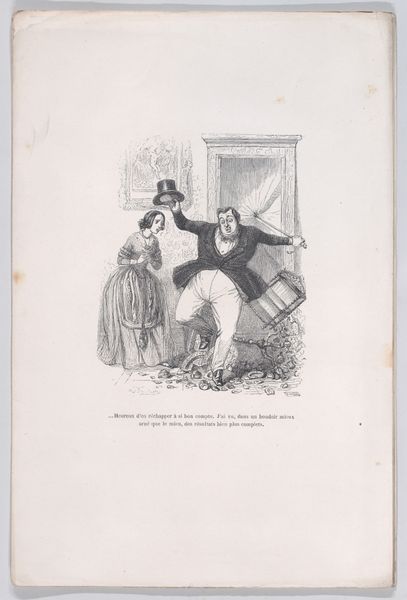
drawing, print, pen
#
drawing
#
comic strip sketch
#
quirky sketch
# print
#
caricature
#
sketch book
#
personal sketchbook
#
idea generation sketch
#
sketchwork
#
visual diary
#
sketchbook drawing
#
pen
#
genre-painting
#
storyboard and sketchbook work
#
sketchbook art
Dimensions: height 215 mm, width 275 mm
Copyright: Rijks Museum: Open Domain
Editor: This print, "Spotprent met de Haarlemse afgevaardigde Van der Hucht," made in 1867 by Johan Michaël Schmidt Crans, is really intriguing. The scene is clearly a caricature, with exaggerated features and expressions. What I find most striking is the contrast between the two figures; one commanding attention, the other seated with such stern composure. What’s your interpretation? Curator: Indeed. Consider the title "The Address in the Second Chamber." This isn't just a portrait; it's a political commentary. We see the Haarlem delegate presented perhaps during a parliamentary debate. The man in the foreground with his dramatic gesture seems to represent a particular political stance. Notice the figure seated – arguably a representation of tradition or perhaps an opposing viewpoint, stoic and resistant to the other's grandstanding. How do you think the artist is positioning the viewer in relation to these political actors? Editor: That’s a good question! I hadn’t thought about it like that. The body language definitely makes the standing figure more appealing and relatable, especially when compared to the older person looking away with what appears to be disinterest.. Curator: Precisely. This print utilizes the power of imagery to sway public opinion. Consider how print media at this time would reach a broad audience. These images become tools in shaping public discourse. Editor: So it’s not just about the individuals depicted, but also about how political opinions were formed and spread? I guess you could say this image represents a society and period grappling with social and political discourse. Curator: Exactly. Understanding the historical and social context is vital for grasping its deeper significance. We gain insight into how political ideas were debated and disseminated through popular media. What will you take away from that ? Editor: The interplay of art, politics, and public opinion of course and now I understand why learning more about those intersections helps give older artworks more contextual meaning.
Comments
No comments
Be the first to comment and join the conversation on the ultimate creative platform.
